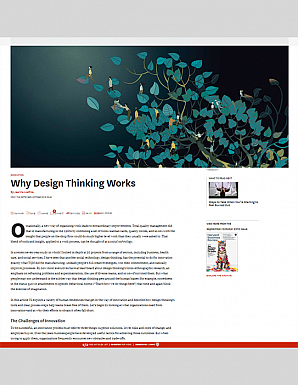

Why Design Thinking Works

Harvard Business Review
Jeanne Liedtka
While we know a lot about practices that stimulate new ideas, innovation teams often struggle to apply them. Why? Because people’s biases and entrenched behaviors get in the way. In this article a Darden professor explains how design thinking helps people overcome this problem and unleash their creativity.
Though ostensibly geared to understanding and molding the experiences of customers, design thinking also profoundly reshapes the experiences of the innovators themselves. For example, immersive customer research helps them set aside their own views and recognize needs customers haven’t expressed. Carefully planned dialogues help teams build on their diverse ideas, not just negotiate compromises when differences arise. And experiments with new solutions reduce all stakeholders’ fear of change.
At every phase—customer discovery, idea generation, and testing—a clear structure makes people more comfortable trying new things, and processes increase collaboration. Because it combines practical tools and human insight, design thinking is a social technology—one that the author predicts will have an impact as large as an earlier social technology, total quality management.